- Home
- slideshows
- miscellaneous
- I checked out Mexico City's metro and was blown away by how much cleaner, faster, and quieter it is than New York's subway. Here's what it was like.
I checked out Mexico City's metro and was blown away by how much cleaner, faster, and quieter it is than New York's subway. Here's what it was like.
Like most cities, the entrances are clearly marked from above ground. In most of the stations I visited there were multiple entrances for a stop.

Every station has its own icon, usually related to its history or location in the city. That makes the city a lot easier to navigate for people who may not be able to read.
There's a total of 12 lines criss-crossing the city, and connecting to regional rail services.
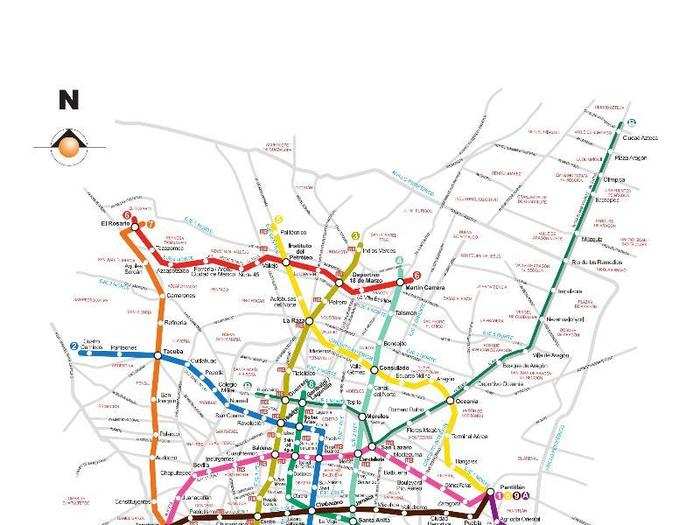
The system is open from 5 am to midnight and only has two tracks in each direction — which means no express trains like in New York.
Most stations had expansive mezzanines with food vendors, shoe shine stands, internet cafe's and more.
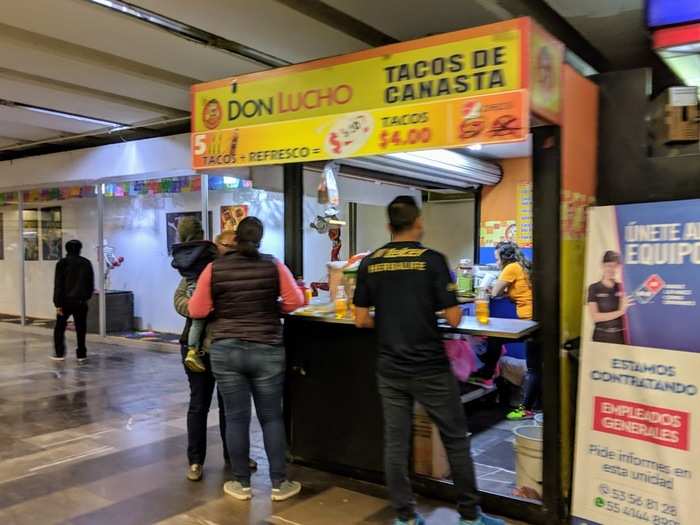
And yes, even Domino's Pizza.
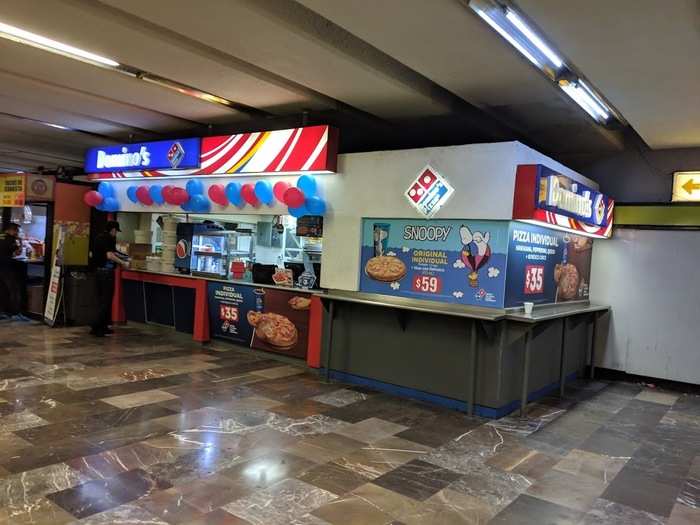
First things first, I needed a ticket. Fares run five pesos per person per trip, or roughly $0.26, and can only be bought in person at a booth.
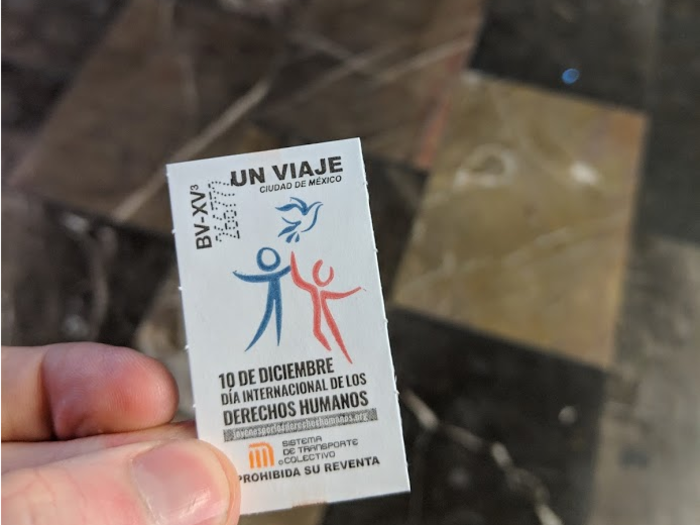
There's also a re-loadable card you can buy, but most people seemed to favor the paper tickets.
The ticket lines can get long, but move quickly.
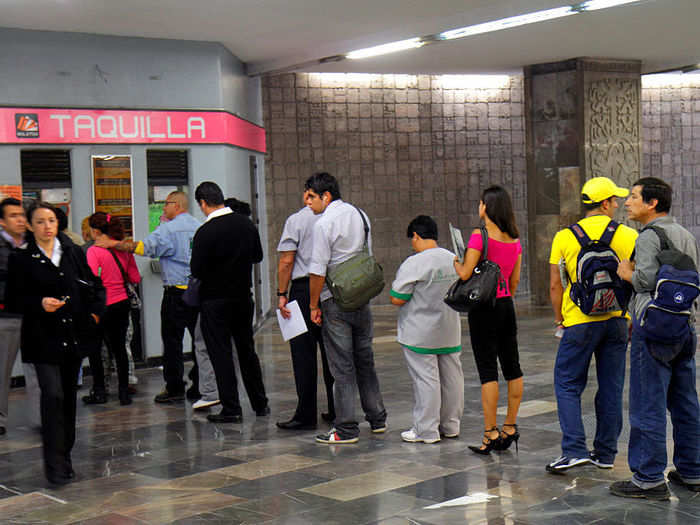
Once on the platform, things were sparkling clean and very orderly.
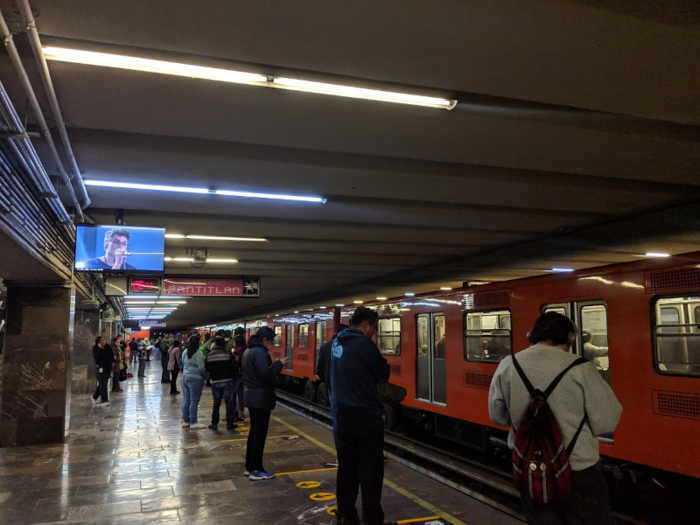
On that TV, a piano cover of A-ha's 1985 hit Take On Me was playing.
Two cars are always reserved for women and children. At busy stations, a police officer was present to make sure no one accidentally boards in the wrong section.
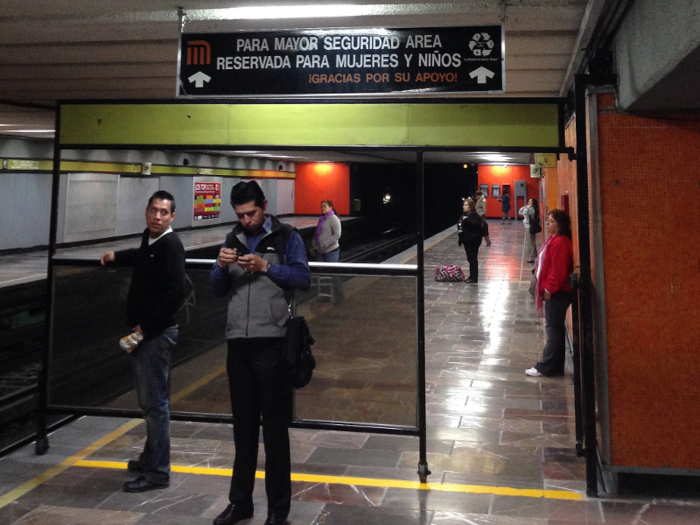
Yellow lines mark where the doors will open when a train pulls in. "Let people off before boarding," a sign reads above each door.
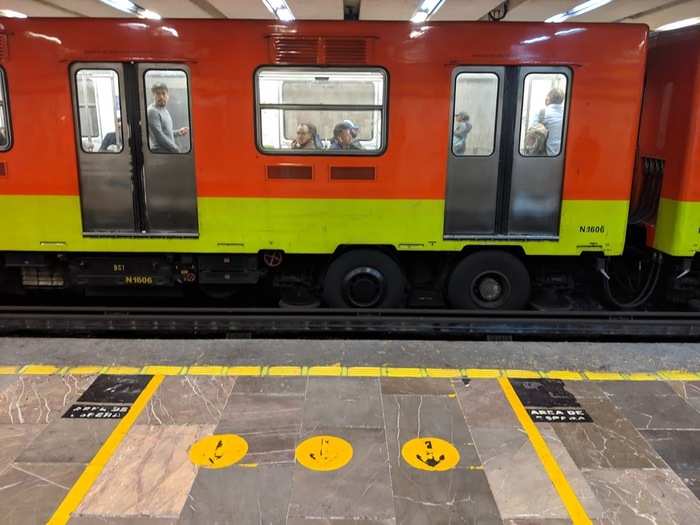
Trains can get crowded — very crowded — during rush hour. This photo is from mid-morning, well after the morning rush, when things had calmed down a bit.
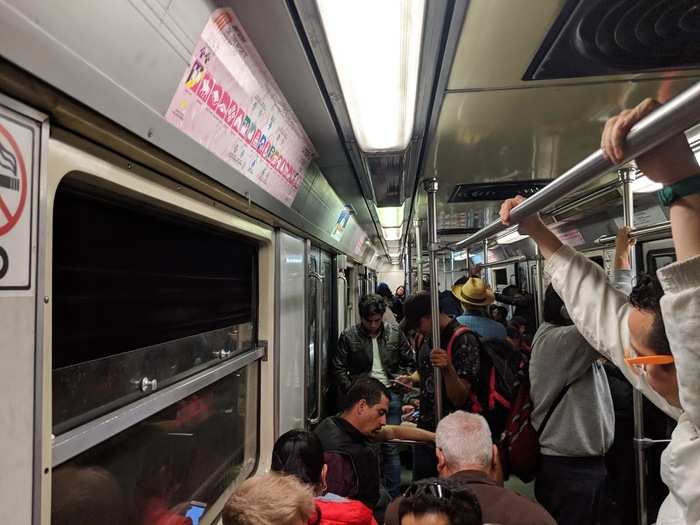
Unlike New York though, people seemed more willing to help someone find their stop, or get off the train when they needed to.
Here you can see the rubber wheels that not only keep noise down, but also help in the event of an earthquake, which are common in the city.
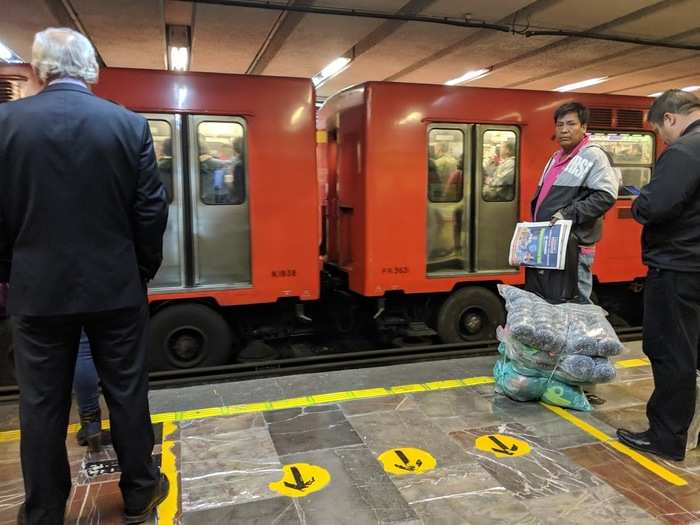
The two newest lines run on metal wheels and look more like European subway systems.
There's also an emergency ladder in each car in case of a seismic event.
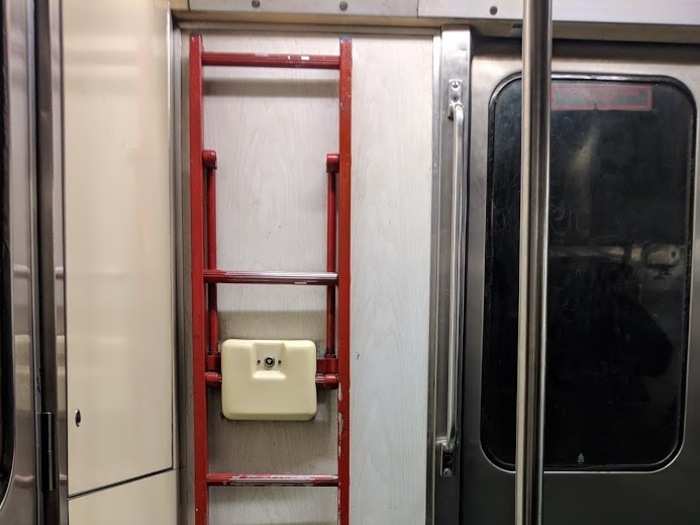
On board, the trains are like most any other subway car in the world. There appeared to be air conditioning, but the windows were open.
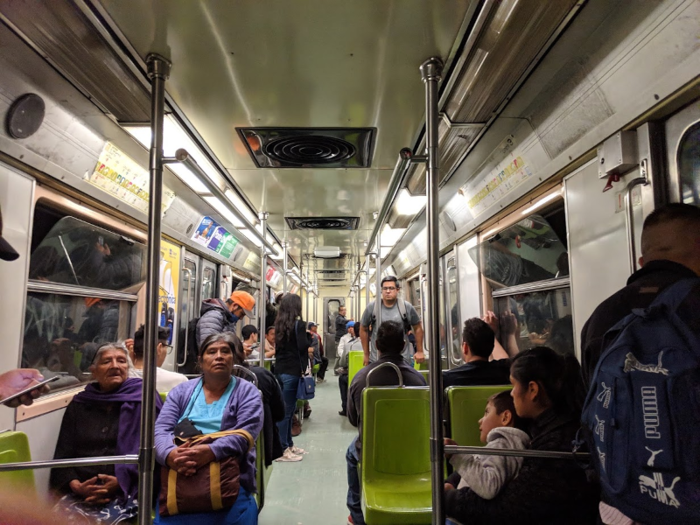
There aren't any loudspeaker announcements for stops — so paying attention to the strip map was super important, especially when it was too crowded to see out the window.
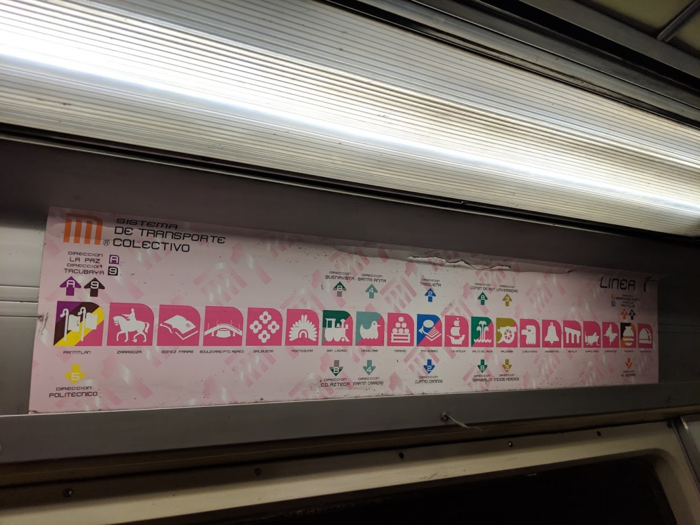
Only 24 of the system's 195 stations connect multiple lines — but the transfers are often beautiful walks.
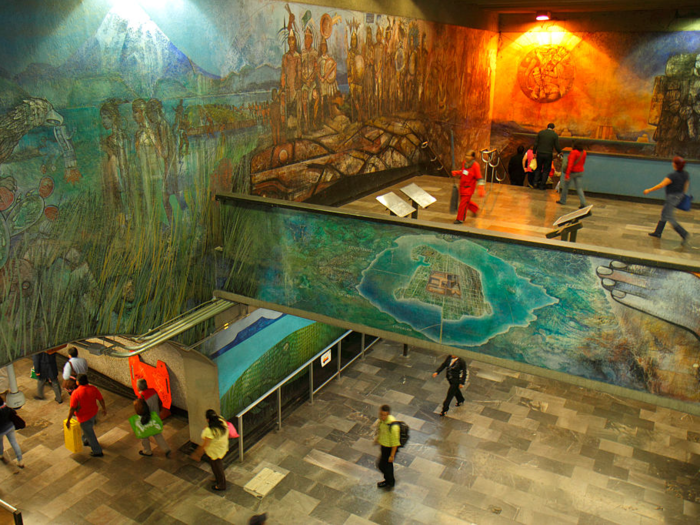
At La Raza, a light tunnel is filled with educational posters about the history of the earth.
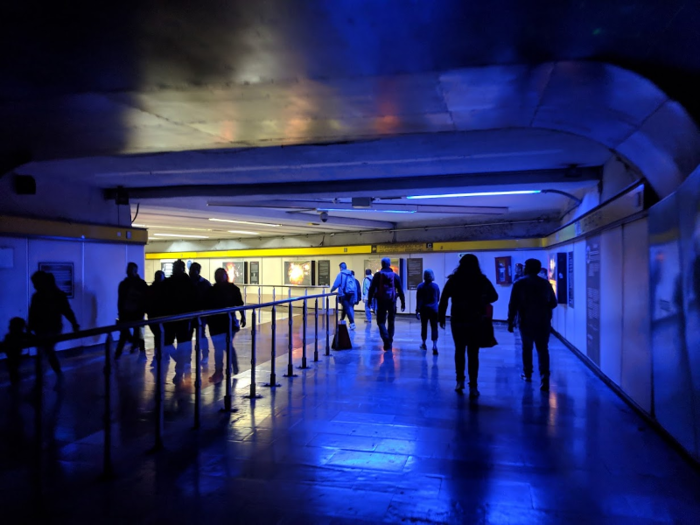
Where else can you walk the entire world timeline scaled to a 5 minute walk?
Unlike New York, outside stations are covered from the elements and just as clean as their subterranean counterparts. The skylights are also a nice touch.

So while I was eager to return home after my brief trip, I'll miss the simplistic beauty of Mexico City's metro — and especially the delicious snacks.

I'll admit that I only rode the trains a handful of times over five days, but in that time I experienced no delays or service changes (the likes of which are are now all too common in New York City.)
What's more, the language barrier caused no issues whatsoever — something that any foreign visitor to New York would likely say is a big headache for figuring out the complicated system.
All things considered, Mexico City's metro gets a full 10 of 10 rating in my book.
Popular Right Now
Popular Keywords
Advertisement